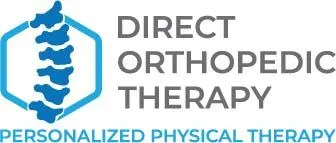Direct Orthopedic Therapy and our staff have had the privilege of working with many youth athletes across a wide variety of sports over the years. We’ve seen them training and competing when healthy, and we’ve been there to build them back up when they’ve been injured. We were them not too long ago.
A big historical trend is how much more competitive youth athletics have gotten. The expectations from coaches, parents, and self-imposed by the athletes have increased tremendously. The desire to excel, compete at a high level, and do what the pros do, as well as the amount of training stress our youth athletes put on their changing bodies, follow suit.
One of the biggest concerns for coaches and parents is injury prevention. Fortunately, modern times have afforded us the best technology, research, and science to support good training habits, and we know more than ever how to do this. Like many things, once grasped, the key principles of injury prevention are actually quite simple.
Here are four key principles to keep in mind on the topic of building durable athletes:
Movement Quality Matters
Movement is actually a complex process. Much like a muscle, our neuromuscular system responds and gets more efficient at doing what we ask of it most often.
My favorite saying about this is ‘nerves that fire together wire together’. Neural pathways light up whenever certain movements are drilled. The more variety and repetition we get, the more robust our movement intelligence becomes.
In training for injury prevention and performance, it’s always important to train in and develop capacity for a wide variety of movements. This will shape our young athletes’ bodies into Swiss army knives able to adapt to many physical demands.
We Don’t Over Train, We Under Recover
When our tissues absorb force, both cumulatively over time and in a single instance, there is a cost—a metabolic cost and a structural cost. Our body has an amazing and constant process of renewal… most of which happens not as we train but as we rest, recover, refuel, and sleep!
With the added pressures we see in youth athletics today, the training they undergo is higher than ever, but that’s not the only problem. Their bodies are inherently healthy and will adapt quickly to the training stimulus, but how well and how quickly they recover determines if they keep up with the pace or fall behind. Fatigue, aches, pains, and nagging injuries are all signs that their body isn’t fully recovering from the stress of training.
Make sure hydration, nutrition, sleep quality, and sleep duration are all dialed in. The occasional Epsom salt bath, yoga class, regular stretching, and foam rolling are also great ways to keep the body balanced and recovering well.
Injury Prevention = Improved Performance
It’s all about forces. Quality training, particularly with an eye toward injury prevention, is about improving our body’s ability to absorb or produce force. Force comes at us from all directions, so the better prepared we are for it, the less likely we are to be injured because you often get injured in the areas you don’t train. It’s really simple: a given tissue has a certain loading capacity it’s capable of… if untrained, that loading capacity isn’t too high, and it’s susceptible to injury. If trained regularly, that tissue will be more durable and resilient.
Improving our tissues’ ability to absorb and produce force not only helps prevent injuries but also leads to improved performance. Jumping higher, running faster, and changing direction quicker is all about absorbing and then producing forces. The athlete who can absorb and produce force quicker and more powerfully wins!
Strength Training Helps (Not Hurts)
A common myth in training is that resistance or weight training is dangerous for young athletes’ development. Medical research has found that nothing could be further from the truth. Resistance training not only strengthens bones, muscles, ligaments, and tendons but strength training has also been directly linked to a decreased chance of injury on the field.
As noted above, it’s all about the ability to absorb and produce forces. Resistance training, adding an additional external load to a movement, is simply a way to stimulate further adaptation in tissue.
It is important to approach resistance training with good instruction first, though. Good mechanics and bodyweight mastery are the first priority; only then should we progress by adding load. Many trainers lose sight of this, and weight is thrown on top of dysfunctional movement, often leading to injury.
Direct Orthopedic Therapy’s 3-Phase Functional Strength Method:
Over the years, I have built upon my experience as a College Athlete and classical training as a Doctor of Physical Therapy. I’ve had the good fortune to be exposed to great movement practitioners in yoga, martial arts, strength & conditioning, and calisthenics, all of which are unique movement practices of their own but all with a common theme.
Alignment, Tension, Breath, and Control are principles that are often lost in most training environments.
Our bodies are amazing and meant to carry us through our lives, beyond youth athletics into adulthood and old age. We only get one body, and it would be wise for our youth to get to know it early in life.
Being in practice for over 10 years made me realize a few things:
- I enjoy working with youth athletes because it’s such a formative time
- It’s easier to form good movement habits early then to unlearn bad habits later
- Improving one’s movement intelligence and body awareness is more than just sport… it’s about developing confidence, getting comfortable in our skin, tuning into our emotional and physical state, and learning to manage ourselves
- Good movement health parlays into good emotional health and cognitive function
Out of this passion and experience, we have created our 3 Phase Functional Strength Method to be a rehab & training program that serves as a users manual for you body:
- Identify the Root Cause & Rehab Injuries
- Restore Functional Strength
- Optimize Performance & Quality of Life
If any of the above hit home and you want to learn more about how we can help you or your child develop a resilient & durable body that is primed for performance. I want you to go ahead and book a free discovery call with me…
On this call:
- We will personally get on the phone together to determine what’s going on, what may be holding you back, and what can be done to resolve it for good…
- We will cover my 3-Phase Functional Strength Method, so you will leave the session confident that you know what to do next.
- We will assess whether I can help and whether you are a good fit for our course of treatment…
- If it feels like a good fit, we’ll talk about what I do and how we can work together to resolve pain and improve performance…
Book your call here: calendly.com/directorthopedictherapy/freediscoverycall
This free call has helped 100’s of people understand what’s going on and what they need to do to break the cycle of persistent pain and start getting results and has the power and potential to do the same for you.
To Your Health,
Jonson Yousefzadeh PT, DPT, COMPT
Owner, Direct Orthopedic Therapy



